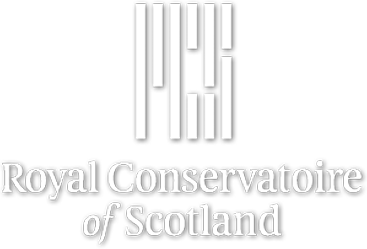Interludes - Entanglements and Response-ability in Intergenerational Performance
Research output: Contributions to books, editions, reports or conference proceedings › Chapter › peer-review
Contributors
About
My contribution is a series of chapter interludes throughout the book, which form a critical-creative reflection on my practice-led research into wildness and ecological performance practice.
I am returning to a performance, a collaborative process: to children, adults and the performances of rocks, stones, matches, striking, flames, smoke, buckets and water.
Karen Barad presents a critical approach to ‘re-turning’: it is not a reflection or a looking back, but is a turning over and over, an ‘iteratively intra-acting. . . diffracting anew, in the making of new . . . diffraction patterns’ (2014: 168). In these interludes I re-explore, re-turn over, and in doing so participate in making new diffraction patterns of, an intergenerational performance project, Wild Life (2014/16). The project was part of my practice-led research exploring how performance can be an ecological practice. I collaborated with eight professional and nonprofessional child and adults performers, and nonhuman materials including rocks, water and fire, co-creating a public live art and dance performance that explored ‘wildness’. Through written reflections about my experience as an artist-researcher of directing Wild Life, along with images and paratexts (texts with images), these artist pages are a creative re-turning of a past human-nonhuman performance. My method of using images echoes Anna Tsing’s approach of using images not to show ideas directly but ‘to present the spirit of my argument’ (2015: viii).
The interludes explore the potential for intergenerational performance ecology to enact human-nonhuman intra-action and the performativity of differences. I suggest that live performance has the potential to expose human-nonhuman intra-acting agencies: performance can demonstrate – in its very liveness and methods of practice - the agential making and un- and re-making of differences and connections across the human and nonhuman. If diffraction is ‘a material-discursive phenomenon that challenges the presumed inherent separability of subject and object, nature and culture . . . human and nonhumanʼ (Barad 2007: 381), then intergenerational performance ecology can be thought of less as an assemblage of diverse human and nonhuman connected parts and more as an ongoing (re)configuring of patterns of entangled differences across the human and nonhuman. Barad argues that ʻdifference is tied up with responsibility (2007: 36), where ‘responding’ is about being 'response-able' to the ‘thick tangles of spacetimematterings that are threaded through us’ (2014: 184). If we are always already participants in processes of entanglement and differentiation, of marking and being marked by the more-than-human, then what is our response-ability to our unavoidable entanglements? In disrupting power relations between differently aged humans, and between the human and nonhuman, perhaps intergenerational performance can draw attention to our entanglements and to our response-ability to those entanglements?
I am returning to a performance, a collaborative process: to children, adults and the performances of rocks, stones, matches, striking, flames, smoke, buckets and water.
Karen Barad presents a critical approach to ‘re-turning’: it is not a reflection or a looking back, but is a turning over and over, an ‘iteratively intra-acting. . . diffracting anew, in the making of new . . . diffraction patterns’ (2014: 168). In these interludes I re-explore, re-turn over, and in doing so participate in making new diffraction patterns of, an intergenerational performance project, Wild Life (2014/16). The project was part of my practice-led research exploring how performance can be an ecological practice. I collaborated with eight professional and nonprofessional child and adults performers, and nonhuman materials including rocks, water and fire, co-creating a public live art and dance performance that explored ‘wildness’. Through written reflections about my experience as an artist-researcher of directing Wild Life, along with images and paratexts (texts with images), these artist pages are a creative re-turning of a past human-nonhuman performance. My method of using images echoes Anna Tsing’s approach of using images not to show ideas directly but ‘to present the spirit of my argument’ (2015: viii).
The interludes explore the potential for intergenerational performance ecology to enact human-nonhuman intra-action and the performativity of differences. I suggest that live performance has the potential to expose human-nonhuman intra-acting agencies: performance can demonstrate – in its very liveness and methods of practice - the agential making and un- and re-making of differences and connections across the human and nonhuman. If diffraction is ‘a material-discursive phenomenon that challenges the presumed inherent separability of subject and object, nature and culture . . . human and nonhumanʼ (Barad 2007: 381), then intergenerational performance ecology can be thought of less as an assemblage of diverse human and nonhuman connected parts and more as an ongoing (re)configuring of patterns of entangled differences across the human and nonhuman. Barad argues that ʻdifference is tied up with responsibility (2007: 36), where ‘responding’ is about being 'response-able' to the ‘thick tangles of spacetimematterings that are threaded through us’ (2014: 184). If we are always already participants in processes of entanglement and differentiation, of marking and being marked by the more-than-human, then what is our response-ability to our unavoidable entanglements? In disrupting power relations between differently aged humans, and between the human and nonhuman, perhaps intergenerational performance can draw attention to our entanglements and to our response-ability to those entanglements?
Details
| Original language | English |
|---|---|
| Title of host publication | Diffracting New Materialism: Emerging Methods in Artistic Research |
| Publisher | Palgrave Macmillan |
| Publication status | Accepted/In press - 2022 |
